
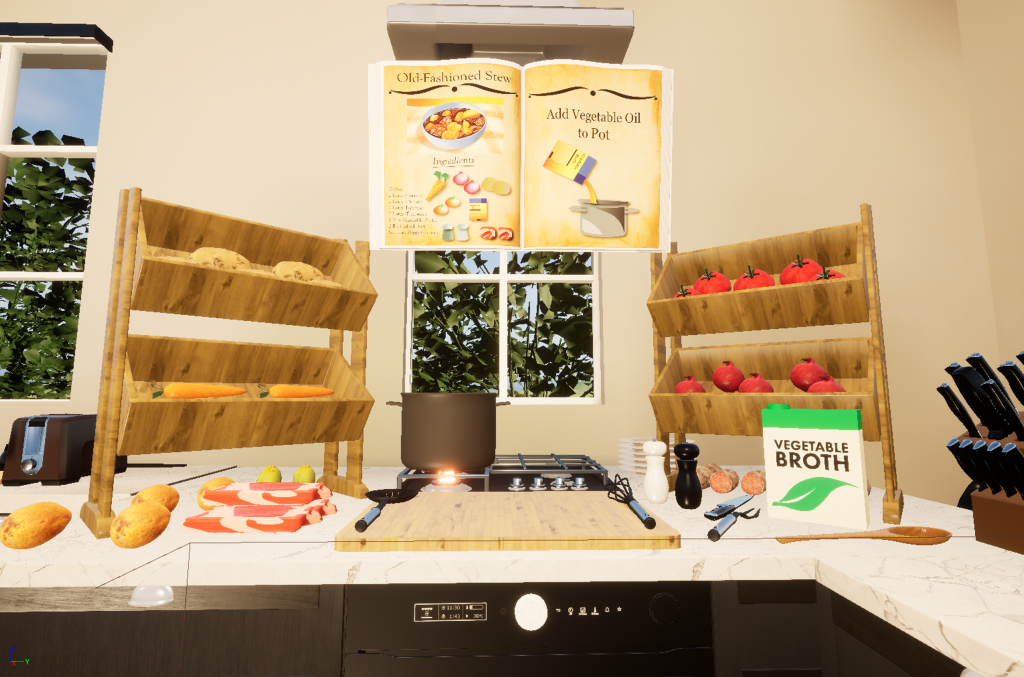
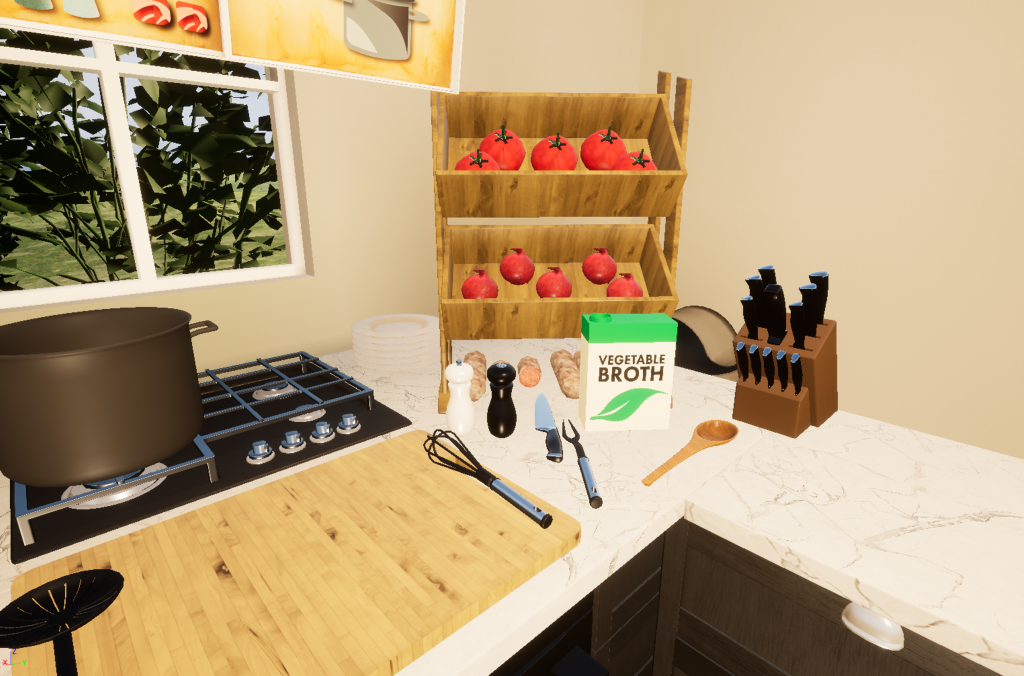
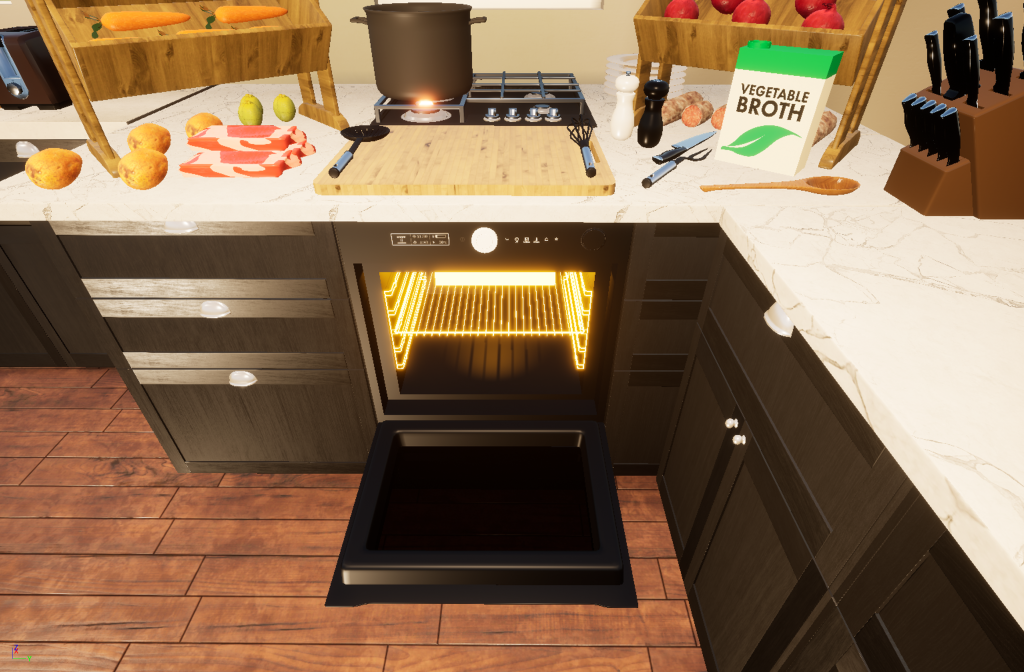
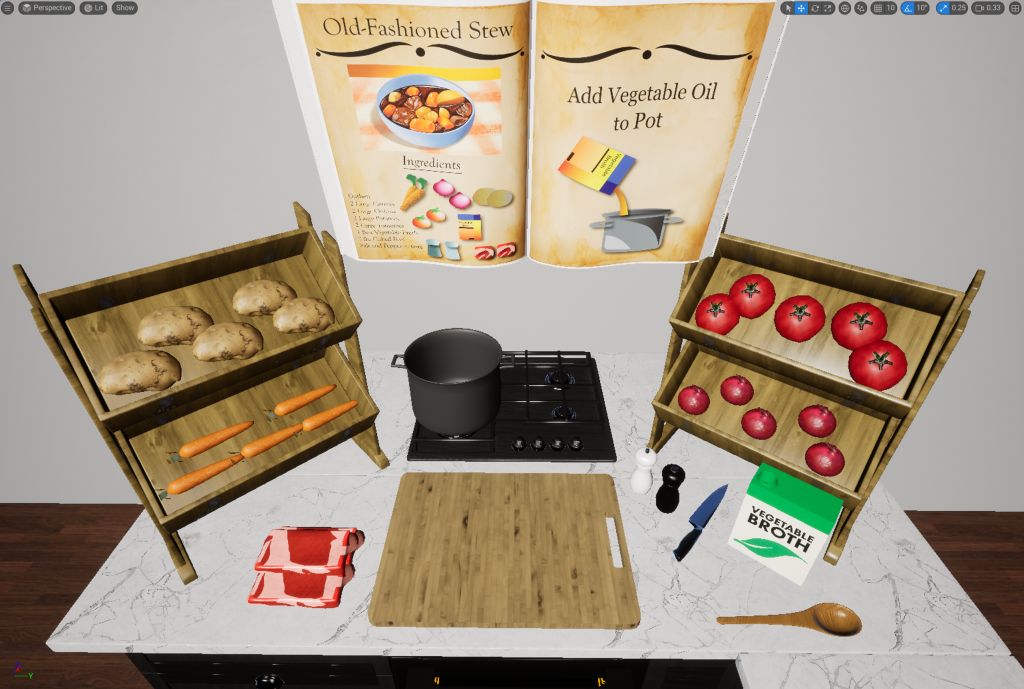
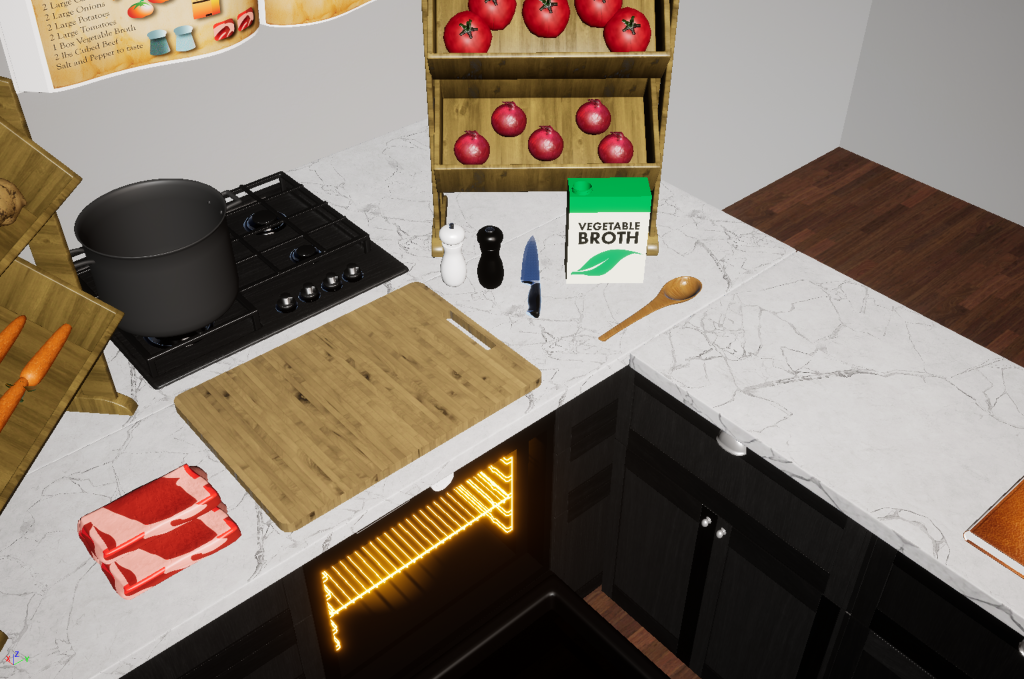
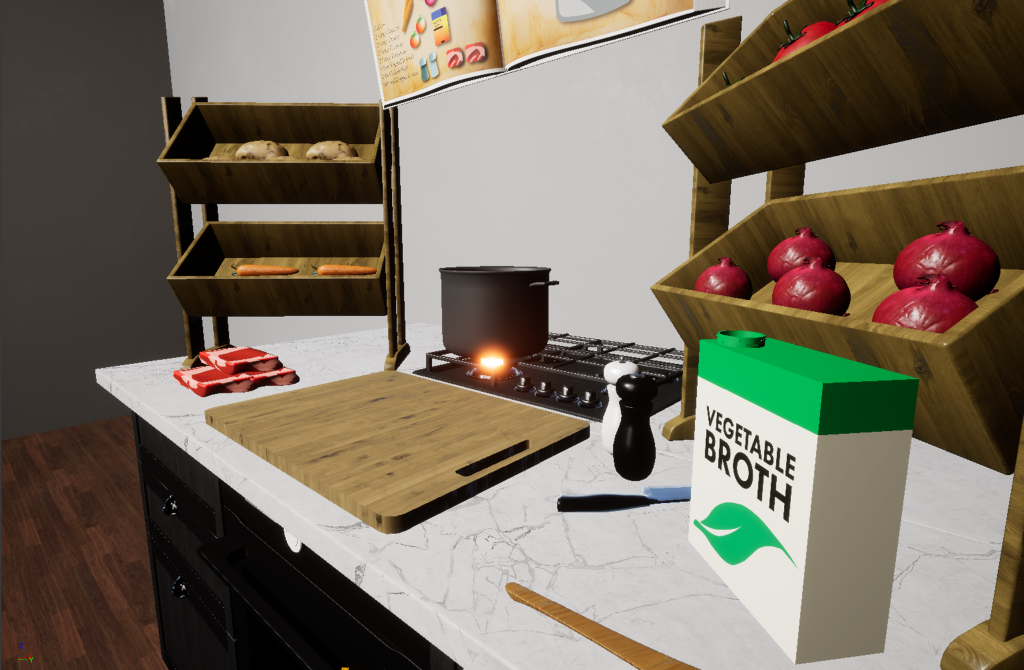

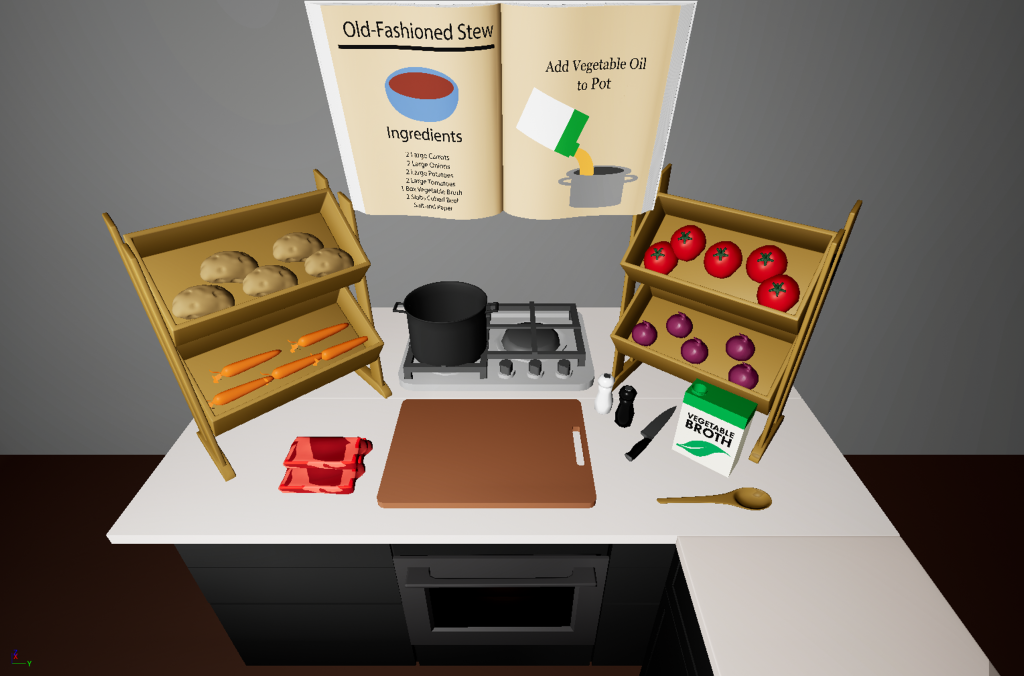

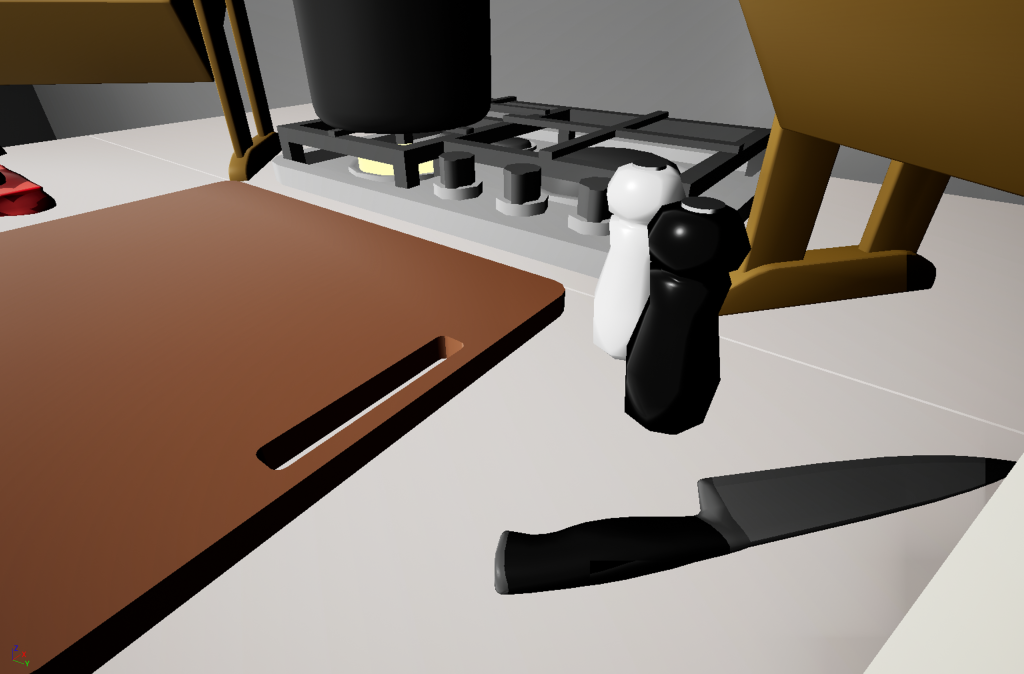
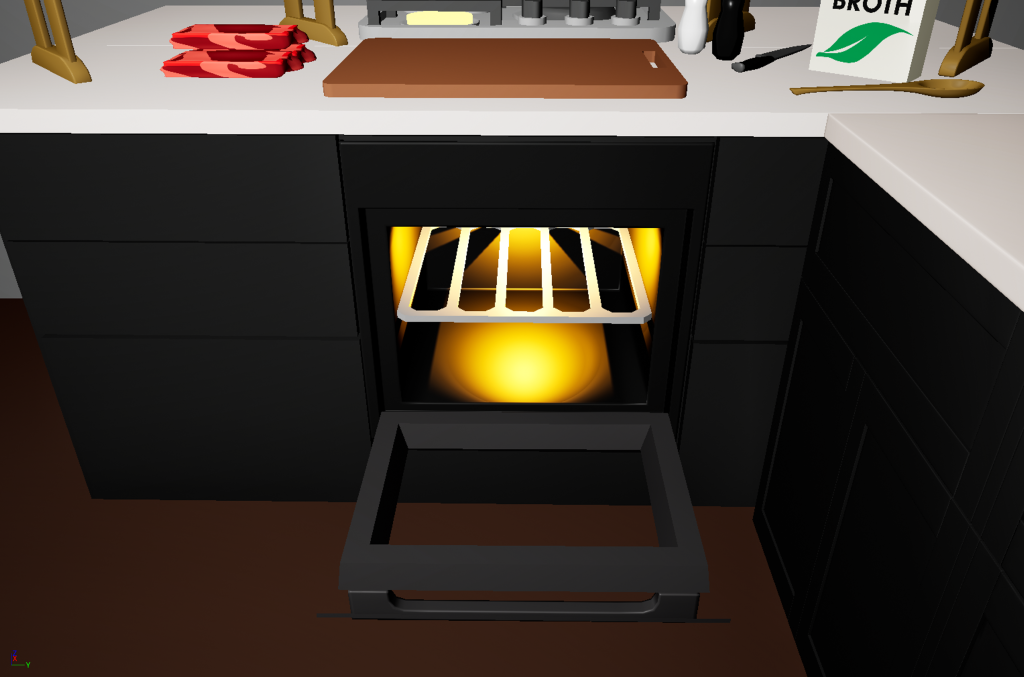
KitchenVR is a virtual reality application developed to assist in cognitive rehabilitation by simulating real-life kitchen tasks. The application focuses on improving motor skills, decision-making, and cognitive abilities in patients undergoing therapy. My work on this project involved developing custom interaction systems, creating scalable visual environments, and implementing telemetry-based tracking for patient performance analysis and research.
I completed work on the following areas:
- Custom Physics and Interaction System
- Visual Complexity and Cognitive Testing
- Telemetry and Replay System
- Research and Continuous Improvement
Custom Physics and Interaction System
One of the core aspects of KitchenVR was building a robust, custom physics system to enable more responsive and realistic object interaction. Unreal's build in physics just didn't quite cut it for the level of interaction we were looking for, especially when grabbing items in virtual reality and moving them to inaccessible places. I wrote custom C++ solutions to provide responsive and accurate feedback for users. This system ensured that every interaction felt more natural and distracted less from the therapeutic goals of the application.
Visual Complexity and Cognitive Testing
To support cognitive rehabilitation, we developed environments with varying levels of visual complexity. These environments ranged from simple, clutter-free settings to highly detailed and dynamic kitchens. The goal was to test patients’ cognitive load and reaction to different levels of visual stimuli, helping therapists better understand their cognitive abilities and tailor rehabilitation exercises accordingly.
Telemetry and Replay System
As with my work on GaitVR, I developed a telemetry and replay system that captured detailed session data for KitchenVR. This system allowed therapists to review each session in full, analyzing the patient’s actions and decision-making processes. By visualizing performance over time, the replay tool provided essential insights into a patient’s progress and enabled more personalized rehabilitation strategies.
Research and Continuous Improvement
In close collaboration with therapists and medical researchers, I focused on studying how patients interacted with the virtual environment and analyzing telemetry data for research purposes. This data was crucial in refining the application and ensuring it provided meaningful therapeutic outcomes. Each iteration improved the experience for both patients and therapists, with a focus on creating an engaging, effective tool for cognitive rehabilitation.